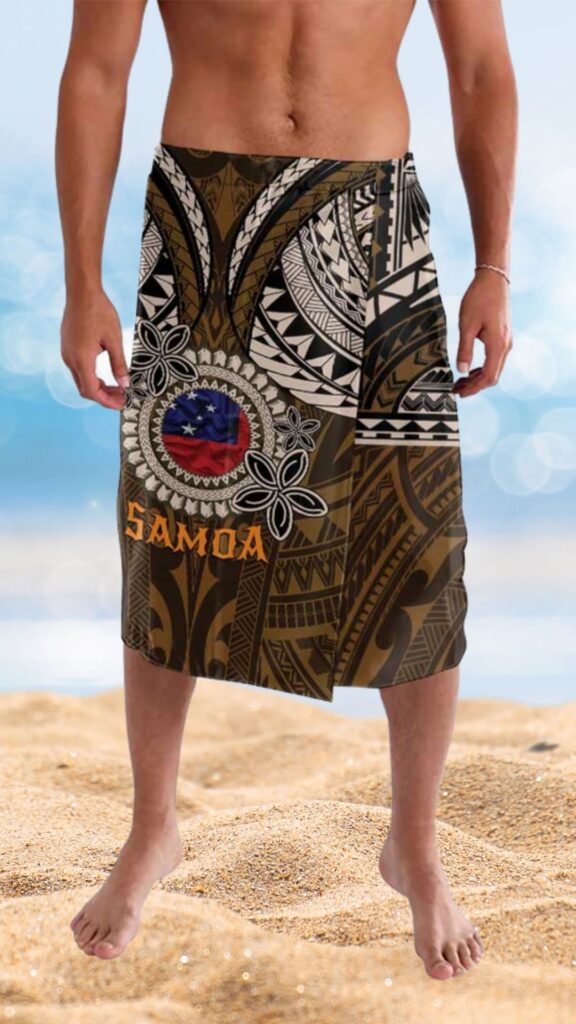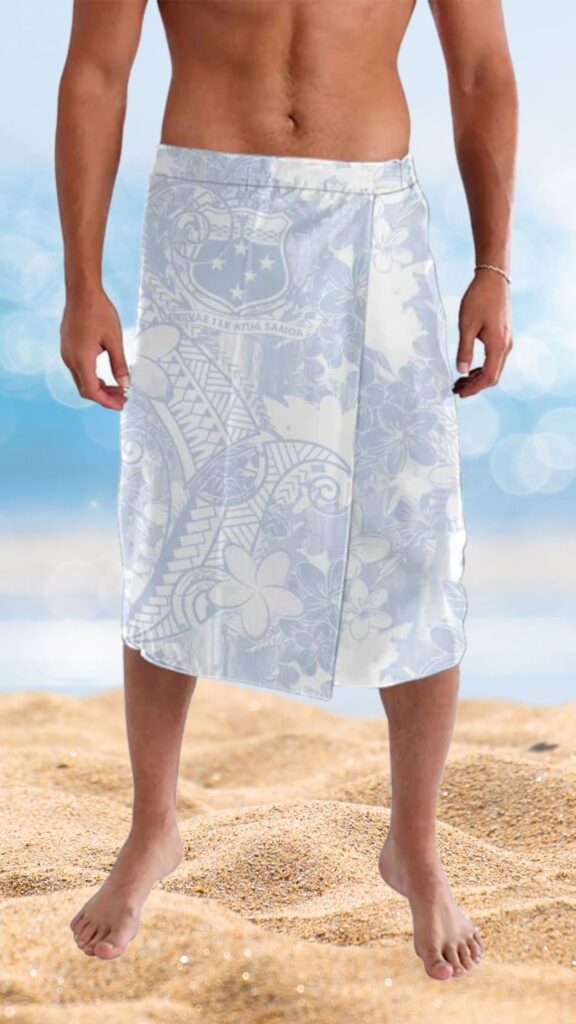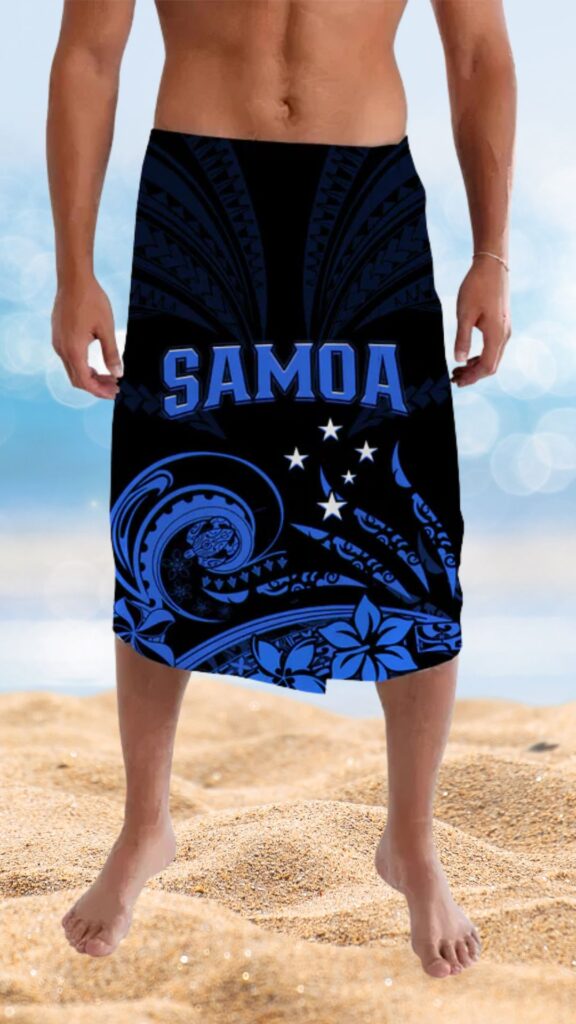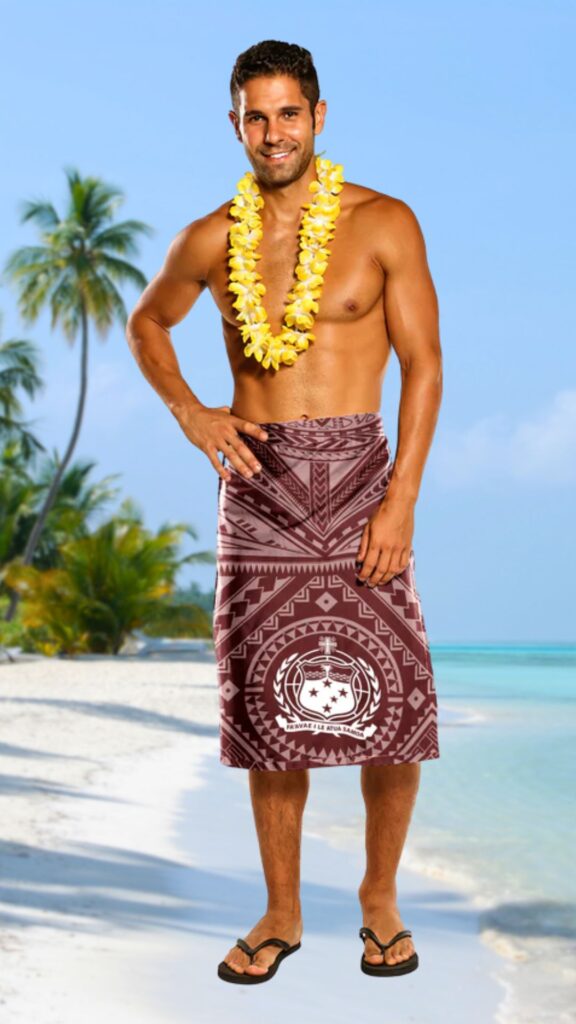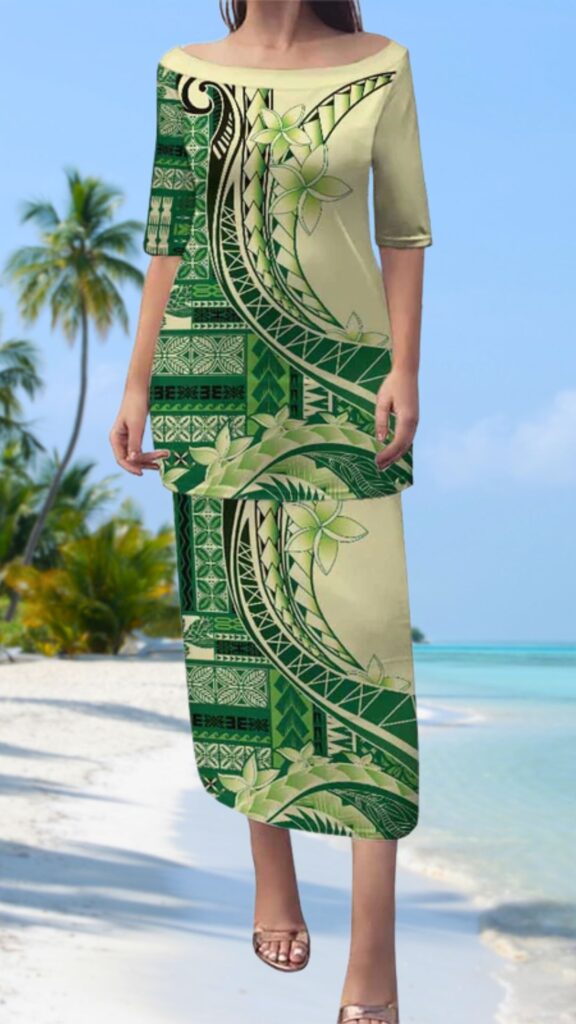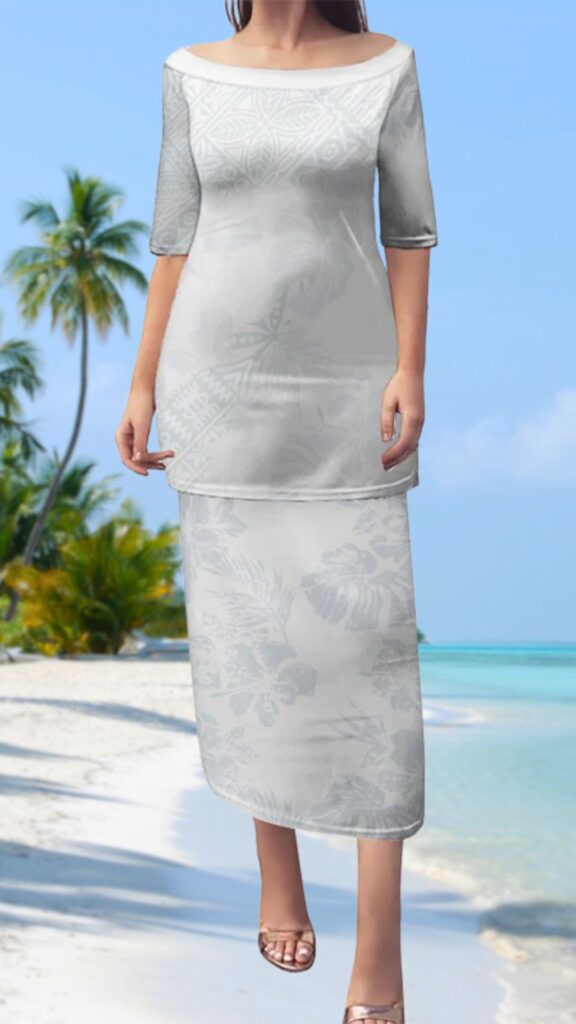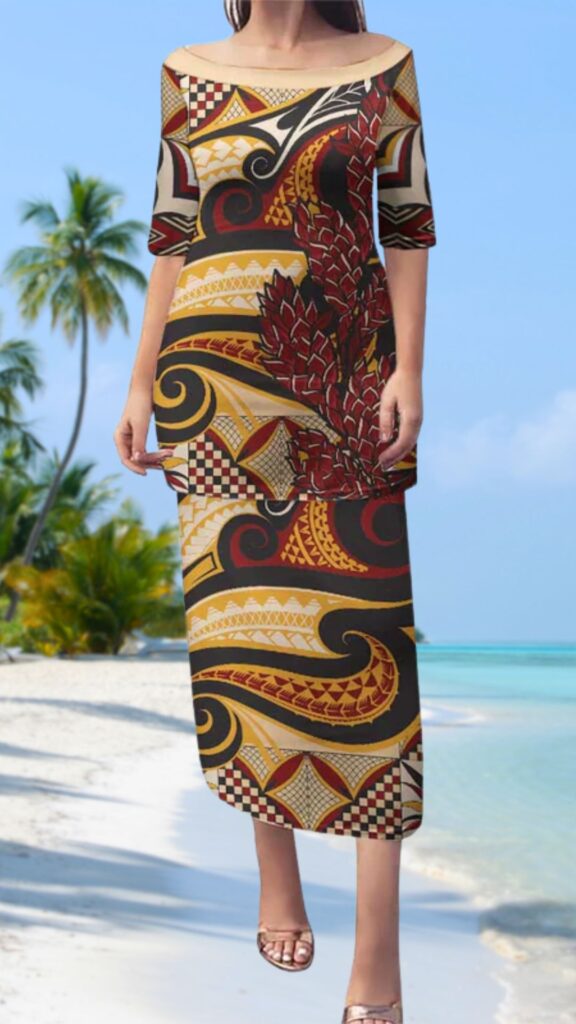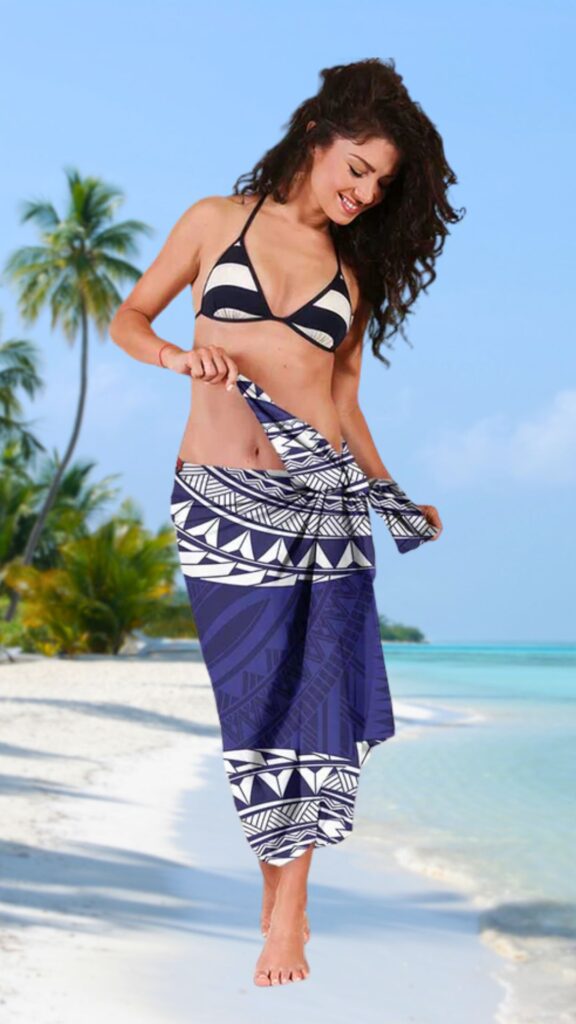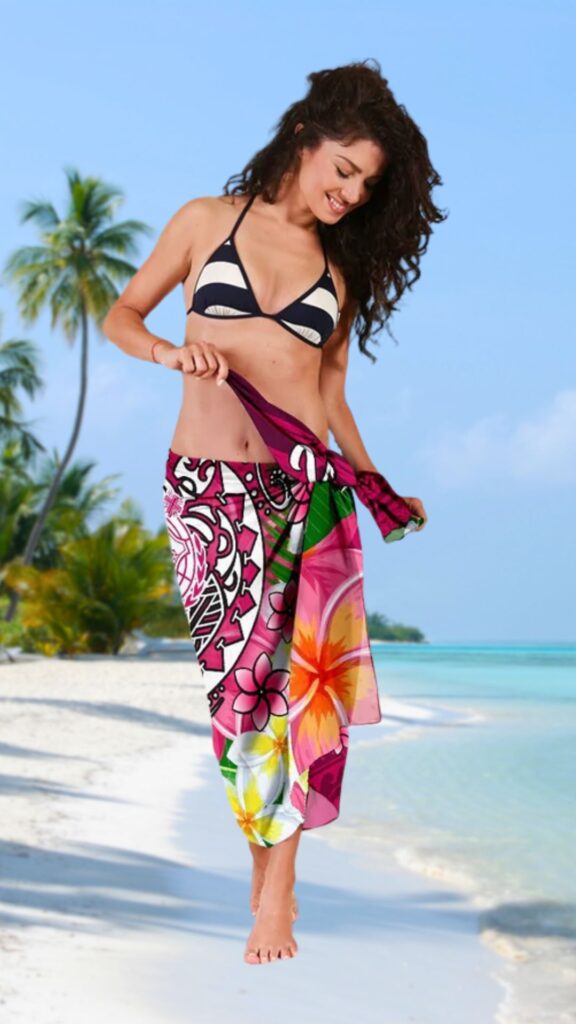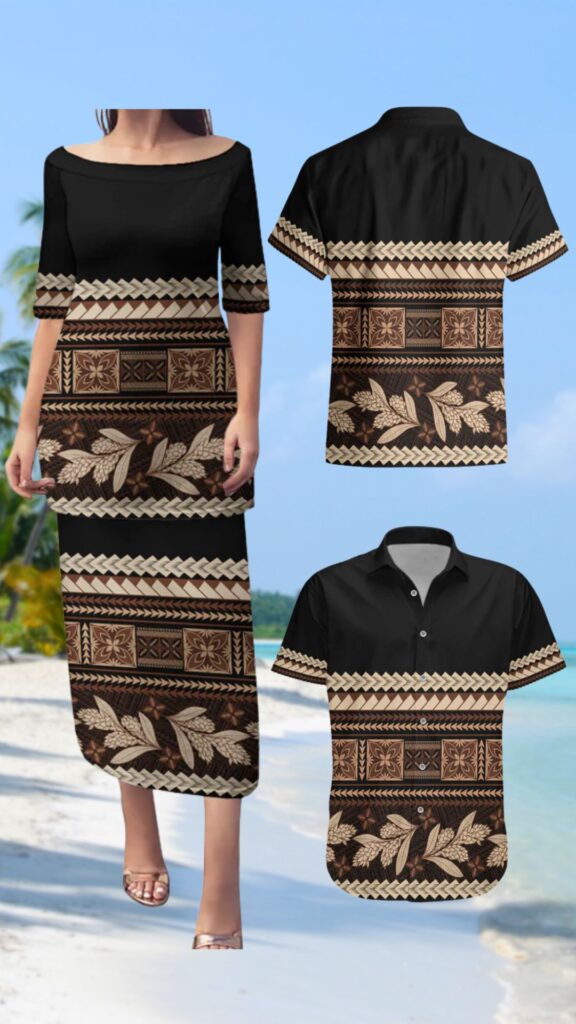Samoa Traditional Clothing: Embracing The Glamorous Beauty

INTRODUCTION
Samoan traditional clothing is one of the most captivating aspects of Samoan culture. It expresses identity and heritage and showcases an intricate tapestry of artistry, symbolism, and historical significance. This article delves into the glamorous world of Samoan traditional attire, exploring its rich history, distinct elements, cultural relevance, and enduring legacy.
I. What’s Samoa Traditional Clothing
Samoan traditional clothing, also known as ie Samoa, plays a pivotal role in the lives of the Samoan people. It embodies their deep sense of community, respect for ancestors, and connection to their land. It is a visual representation of their cultural identity, passed down through generations, and continues to be a source of pride and inspiration. Every stitch, every pattern, and every color tells a story, reflecting the values and beliefs that have shaped Samoan society for centuries.

II. Historical Background of Samoa Traditional Clothes

A. Origins of Samoan Costume
The ancient Polynesian voyagers who first settled in the Samoan Islands created the foundations of Samoa’s traditional clothes. Over centuries, the clothing evolved, reflecting the island’s natural resources, climatic conditions, and cultural influences. The earliest forms of conventional Samoan attire were simple. Artisans craft them from natural materials like tapa cloth, pandanus leaves, and coconut fibers.
B. Influence of Foreign Cultures
Samoan traditional clothing, rooted in ancient Polynesian traditions, has also been shaped by various foreign cultures interacting with the islands over time. The arrival of European explorers, missionaries, and traders brought new materials, techniques, and styles that were gradually incorporated into Samoan traditional attire, resulting in a unique blend of indigenous and foreign elements.
III. What made the Samoan traditional clothes?
A. Original Materials Used in Samoa Traditional Clothing
Samoan costume is renowned for using natural and locally sourced materials. Some of the most commonly used materials include:
- Tapa cloth: A bark cloth made from the inner bark of the paper mulberry tree, which is beaten and felted into a soft, pliable fabric.
- Pandanus leaves: Intricately woven into mats and skirts, providing a natural and durable material.
- Coconut fibers: Coconut fibers are extracted from coconut husks and used for weaving and embellishments.
- Candlenut dye: A natural dye derived from the candlenut tree that creates rich, earthy tones.

B. Common Designs and Patterns
Samoa traditional clothing is characterized by its intricate designs and patterns, each with its symbolic meaning and significance. Some of the most common patterns include:
- Siapo (tapa cloth patterns): are intricate designs created by rubbing dyes or stencils onto the tapa cloth. They often depict geometric shapes, animals, or natural elements.
- Laufala (woven pandanus): Intricate weaving patterns using pandanus leaves, creating complex designs and textures.
- Elei (embroidery): Decorative embroidery using coconut fibers, adding intricate details and accents to garments.

C. Traditional Methods Of Making Samoa Traditional Clothing
The creation of Samoan costumes involves traditional methods passed down through generations.
Weaving: Artists meticulously interlace fibers from plants like pandanus and coconut to create intricate patterns and sturdy fabrics. This process requires precision and a deep understanding of the materials.
Dyeing: Using natural dyes derived from local plants, roots, and berries, the dyeing process involves multiple steps to achieve rich, vibrant colors.
Tapa Making: One of the most iconic methods, tapa (bark cloth) is made by pounding the bark of the paper mulberry tree into a fine, flexible fabric. This labor-intensive process includes soaking, beating, and drying the bark, followed by decorating the tapa with intricate patterns that symbolize various aspects of Samoan life.

IV. Samoan Traditional Clothing Male
A. Ie Faitaga
The ‘ie faitaga is a traditional Samoa formal lavalava, primarily worn by men for significant events such as church services, village meetings, and ceremonies.
Materials and Design
Made from durable cotton or polyester blends, the ‘ie faitaga is typically solid-colored—black, navy blue, dark green, or white for church attire. Unlike patterned casual lavalavas, its simplicity conveys sophistication. Key features include:
- Pockets: Practical for carrying small items.
- Ties: Secured with ties rather than knots for a neat fit.
- Length: Knee-length or slightly below for a dignified look.
Significance
The ie faitaga holds deep cultural significance, representing a blend of traditional values and modern practicality. Wearing an ie faitaga is a sign of respect and adherence to cultural norms, especially during significant social and religious gatherings. It reflects Samoan’s connection to their heritage and commitment to maintaining the dignity of their community’s traditions.
B. The lavalava (sarong)
The Samoan lavalava is a versatile and iconic piece of Samoa traditional clothing, worn by both men and women. This rectangular fabric is wrapped around the waist and secured with a knot or tuck, making it a practical and comfortable garment for daily and ceremonial use.
Materials and Patterns
Lavalavas are crafted from cotton, polyester, or silk, featuring vibrant colors and intricate patterns. Common designs include geometric shapes, floral motifs, and culturally significant symbols, allowing for personal expression.
Significance
Beyond clothing, the lavalava symbolizes Samoan identity, cultural pride, and community. It reflects values of simplicity, practicality, and tradition, uniting people across generations.
Shop now at Polynesian Pride and wear your cultural pride every day!
V. Samoan Traditional Clothing Female
A. The Puletasi
The puletasi, known as puletaha in Tonga, holds a significant cultural place in Samoa traditional dress and sartorial presence among Samoan, Tongan, Fijian women and girls. Evolving from traditional roots, the puletasi has transformed into a symbol of feminine elegance and cultural identity in contemporary times. Puletasi is primarily worn for church services and formal cultural events.
Materials and Patterns
The puletasi is a traditional Samoan long dress consisting of a two-piece outfit with a skirt and a top, typically made from lightweight cotton or polyester to ensure comfort in Samoa’s tropical climate. The dress is adorned with traditional Samoan motifs, including tapa patterns, floral designs, and intricate embroidery. Some puletasi dresses feature additional decorative elements, such as woven flax or lace.

Significance
Over time, Samoa traditional dress has undergone stylistic innovations, incorporating diverse patterns, fabrics, and design elements. These contemporary adaptations reflect the dynamic nature of Samoan, Tongan, and Fijian fashion, blending tradition with modernity to create distinctive and personalized expressions of identity and style.
B. The Ie Toga
The ‘ie toga’ is a very old and rare fine item worn by high-ranking chiefs and daughters of chiefs on essential occasions. It is also presented as a valuable item in ceremonies. Today, the ‘ie toga is also a formal dress worn by Samoan women on weddings, ceremonies, and cultural events.
Materials and Patterns
An ‘ie toga is handwoven with great skill using fine fibers, taking months or years to complete. Traditionally, young women either started their mats or completed those left unfinished by older female family members. This ‘ie toga’ features a row of feathers along the bottom edge. Historically, ‘ie toga’ was decorated with fringes of rare red parakeet feathers from Fiji, which were traded among Fiji, Samoa, and Tonga.
Significance
‘Ie toga’ are highly valued in Samoan society, sealing relationships and featuring at special events and ceremonies. They are preserved with great care, often passed through generations and gaining sentimental and historical value. Important ‘ie toga are sometimes given names.
The presence of an ‘ie toga’ brings dignity to events. Since the early 1800s, Samoan ‘ie toga’ have been exchanged at weddings of high-ranking Tongan chiefs, and the Tongan royal family treasures many fine examples, some dating back to the 1600s.

VI. Traditional Accessories

A. Ula (Flower Necklace)
In Samoa, Ula necklaces are crafted from various natural materials, including fresh leaves, scented flowers, fruit, seeds, shells, and whale teeth. These elements are threaded together in multiple combinations to create beautiful adornments. ‘Ula are worn during festive occasions and are often given as gifts to welcome or bid farewell to guests.
B. Headwear and Headdresses
Samoan costume is often complemented by intricate headwear and headdresses. These include:
- Tuiga (ceremonial headdress): is a familiar adornment and an important cultural symbol. This ornate headdress is often worn during significant events and ceremonies like ‘Ava or Saofa’i ceremonies. It adorns the heads of manaia and taupou as they dance in ta’alolo processions and taualuga performances.
- Fuamalu: A traditional headpiece worn by Samoan women, made from woven pandanus leaves and adorned with flowers or other natural materials.

For couples embracing tradition, the Samoan Arrow Pattern Wedding Band is a meaningful accessory that carries cultural symbolism and timeless elegance.

VII. When To Wear Samoa Traditional Clothing?

A. Samoa Traditional Clothing In Casual Occasions
On casual occasions, men and women typically don an ie or a lavalava as their go-to attire. While any type of shirt is acceptable, men usually go shirtless, especially when working around the house. However, some villages enforce shirt-wearing rules along main roads.
What adds a touch of humor when Samoan men wear lavalava is that nearly all of them wear shorts or pants underneath. In the States, girls might sport shorts, while boys often choose long basketball-style shorts. Interestingly, many school students even wear an entire traditional outfit beneath their school uniforms!
B. Ceremonial Event

Samoan traditional clothing reflects both cultural heritage and the significance of the occasion. For formal events, men typically wear a muted-colored ‘ie faitaga, often paired with a Hawaiian shirt. When attending church, a white ‘ie faitaga is the customary choice, symbolizing purity and respect.
Women, on the other hand, showcase grace and tradition through the puletasi adorned with intricate patterns inspired by nature, such as Siapo designs, Teuila flowers, and other organic motifs. To stay comfortable in Samoa’s warm climate, they prefer breathable fabrics like cotton or lightweight polyester.
C. Wedding Ceremony
In the past, the bride commonly chose an exquisite ie toga with intricate embroidery, shells, and natural materials. But nowadays, the ceremony dress commonly takes the form of a white gown, often adorned with a veil for added elegance. Besides, the bride also wears a customary pale headdress.
The groom, on the other hand, wears a white formal shirt and a black Ie Faitaga, accessorized with a floral necklace (ula). The guests also adhere to Samoan traditional attire – Women often opt for a puletasi or a classic Samoan floral dress. At the same time, men typically wear lavalava or Ie Faitaga with a basic shirt.

VIII. Cultural Significance of Samoa Traditional Clothing
A. Symbolism in Patterns and Designs
Samoa traditional clothing is a canvas imbued with profound symbolism, where every intricate pattern and design serves as a vessel for cultural heritage and meaning. Geometric designs symbolize unity, while animal motifs like sharks and turtles represent strength and endurance. Each thread weaves a connection to ancestors, embodying pride and identity.
B. Preservation of Heritage
Wearing Samoa traditional clothing is not just a fashion choice but a way of preserving and honoring centuries-old traditions and customs. By donning traditional garments, Samoans pay homage to their ancestors and keep their cultural heritage alive in an ever-changing world.
C. Rituals And Ceremonies
Samoa traditional clothing is central to rituals, ceremonies, and rites of passage within the community. Through clothing, Samoans uphold age-old rituals and practices, ensuring their continuity for future generations.

IX. Modern Influence on Samoa Traditional Clothing
A. Trendy Designs
One interesting thing in Samoa is that people still wear traditional dress in their day-to-day lives. Modern Samoan designers and artisans have infused traditional elements with modern aesthetics, creating innovative and culturally relevant garments. These contemporary designs often incorporate traditional patterns, materials, and techniques while adapting them to modern styles and silhouettes.
B. Integration of Modern Fabrics
In addition to natural materials, Samoa traditional clothing also has integrated modern fabrics like cotton, silk, and synthetic materials. These fabrics offer durability, versatility, and vibrant color options, allowing for the creation of intricate and visually stunning garments while preserving traditional designs and patterns.
C. Fun Thing About Fabric In Samoa Traditional Clothing
The fabric holds a significant place in Samoan traditional wear. It’s commonly given as gifts during fa’alavelave (ceremonial occasions), used to cover TVs and roofs, and serves as decoration. Remarkably, the same fabric serves all these purposes. In Samoa, you might receive a puletasi as a gift today and then see the same material used as a tablecloth at your host’s house the next day — just a typical day in Samoa!

X. Samoa Clothing in the Diaspora
A. How Samoan Communities Abroad Keep Traditions
Samoan communities worldwide strive to maintain their cultural practices, including Samoa traditional clothing. They often organize cultural events and workshops to teach younger members knowledge and skills.
B. Influence of Globalization
With the rise of globalization, Samoa’s traditional clothing has gained international recognition, fostering a deeper appreciation for Samoan culture on a global scale. The accessibility of online platforms and social media has enabled Samoan designers to showcase their creations to a broader audience, transcending geographical boundaries.

XI. Tips For Samoan Traditional Wear
How to Wear a Lavalava
For men:
- Step 1: Hold the ie behind you and bunch it at the top to achieve the desired length
- Step 2: Gather the ends of the ie together
- Step 3: Twist the ends of the ie together and pull to tighten. Repeat this step twice
- Step 4: Drop one end of the ie and tuck the other end inside
For Women
- Step 1: Hold the ie behind you and bunch it at the top to achieve the desired length
- Step 2: Bring in the left side first, followed by the right
- Step 3: Pull out the fabric closest to you and wrap it with the loose end of the ie twice
- Step 4: Tuck in the wrapped pieces to secure the knot
CONCLUSION
Samoa’s traditional clothing, crafted with intricate designs and natural materials using time-honored techniques, reflects the island’s rich history and cultural values. These garments, worn daily and for special occasions, symbolize cultural identity, pride, and unity. Despite modern influences, traditional Samoan attire remains true to its roots while adapting to contemporary styles, celebrating heritage and innovation. By preserving these practices, Samoans ensure their cultural legacy endures, with each garment connecting them to their people and land, embodying their culture’s enduring spirit and resilience.
FAQS
What is the Samoan Dress name?
The traditional Samoan dress is called the “lava-lava”, a large rectangular cloth wrapped around the waist. For formal occasions, women wear a “puletasi” (a matching blouse and long skirt), and men may wear a formal lava-lava with a tailored shirt.1
What materials made Samoa traditional clothing?
Samoan traditional clothing is often made from natural materials like pandanus leaves, coconut fibers, and bark from the paper mulberry tree. These materials create fabrics like tapa (bark cloth) and finely woven mats.
What is the difference between Samoa traditional clothing for men and women?
Men typically wear garments like the ie faitaga, a formal wrap-around skirt, and aloha shirts. Women often wear the puletasi, which consists of a matching skirt and a tunic-style top. Both men and women might wear an ie or lavalava for casual occasions, but the styles and tying methods differ.
Can Samoa traditional clothing be worn casually?
Yes, people can wear traditional Samoan clothing casually. Items like the ie and lavalava are common everyday wear for both men and women. These garments are comfortable and versatile and suitable for casual and more formal settings.
What is the significance of the patterns in Samoa traditional clothing?
The patterns on Samoan clothing are rich in symbolism and carry deep cultural significance. Geometric shapes represent unity and harmony, while animal motifs symbolize traits like strength and resilience. Each design element tells a story and connects the wearer to their heritage, ancestors, and community.

I’m a lifestyle curator who has blended Polynesian foodways and fashion into everyday life for over five years. I celebrate makers, materials, and style—with heritage as the headline, not the footnote.
My contact:
Email: [email protected]
Tel: +689 87 246 367

